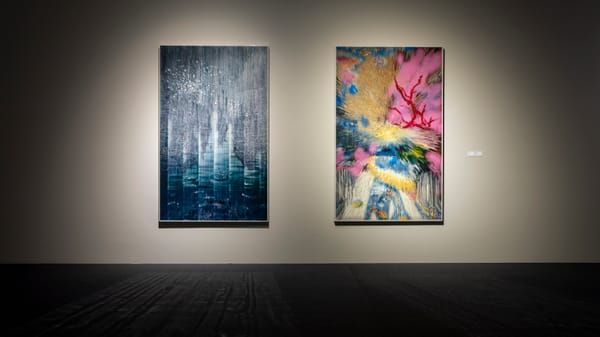Shows
Reflections on Asian LGBTQ+ Art and Issues at “Myth Makers”
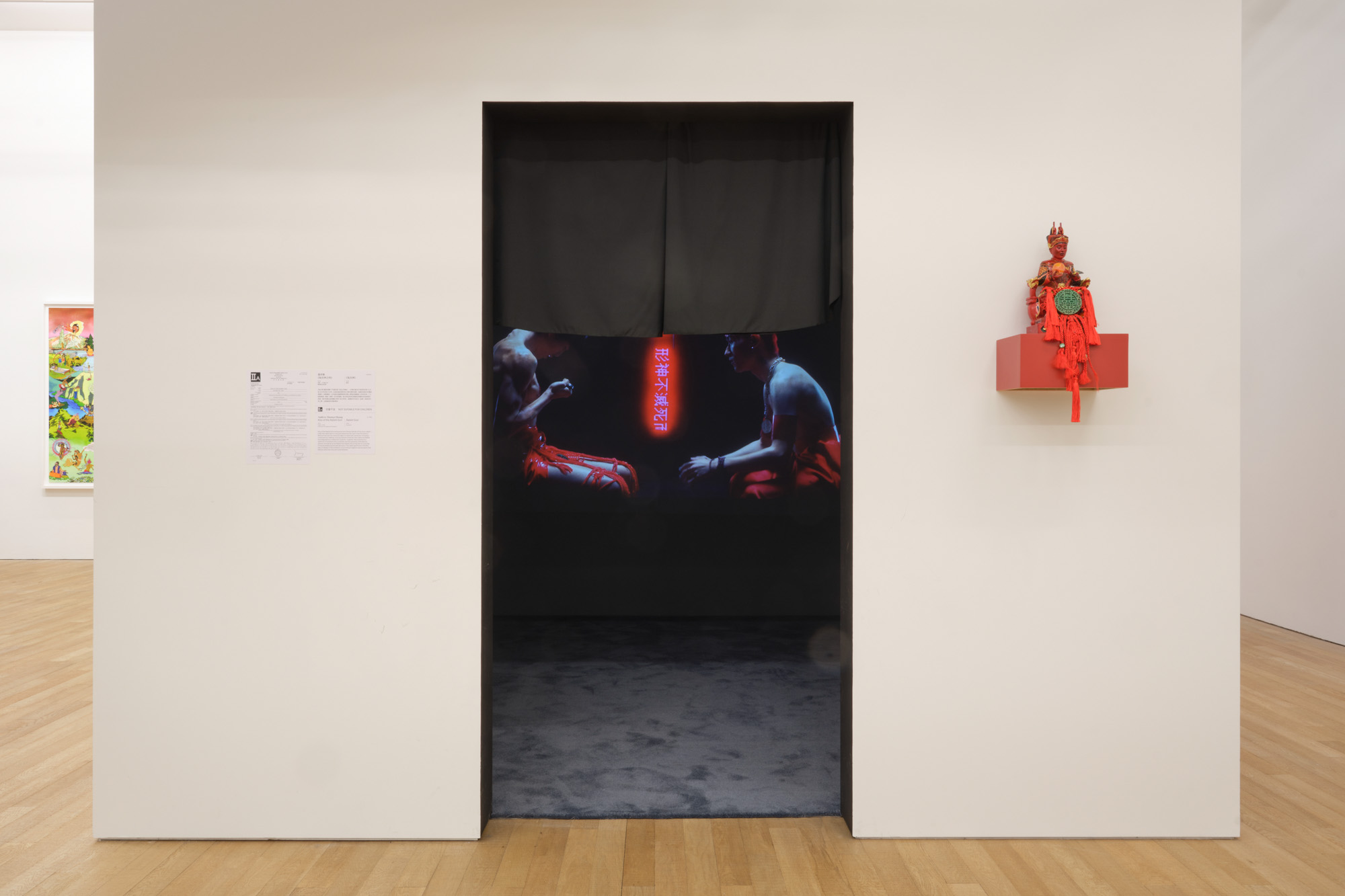

As the third station of an exhibition series organized by Sunpride Foundation with many artworks from its collection, “Myth Makers—Spectrosynthesis III” featured approximately 100 works by more than 60 artists from across Asia and its diasporas. It was particularly significant to witness an Asian queer art exhibition housed at Tai Kwun, a former disciplinary facility, which recalled the historical criminalization of homosexuality in Hong Kong and underscored the predicaments of LGBTQ+ rights and communities in the city.
Addressing “queer mythologies,” curators Inti Guerrero and Chantal Wong organized the exhibition into three distinctive yet related chapters that explored the diversity of sexuality and queer myths. The first chapter, “Queer Mythologies: On and Off the Stage,” showcased the inter-references of Asian religions and folk cultures under the dual trajectories of intersecting time and space. Andrew Thomas Huang’s film Kiss of the Rabbit God (2019) and its related sculpture blend the sophisticated relations of history and modernity, Asia and the West. The representation of the Qing dynasty rabbit god and a sexually awakened young Chinese-American suggests the precariousness of queer identity in the immigrant experience where gods are as fluid as gender.
Starting with Huang’s work, the issue of male homosexuality and homonormativity became more apparent and problematic throughout the exhibition with the representations of conventionally attractive, young bodies, especially those of homosexual men. This type of representation mirrored similar homonormative problems embedded in local LGBTQ+ communities, where emerging homosexual spaces and global queer identity create a new hierarchy of queer identities based on age, class, gender performance, ethnicity, and body type in Hong Kong.
For instance, in Chapter Two, “Body Politics: Criminalization, Control, and Counter-Narratives,” Zheng Bo’s video Pteridophilia I (2016) evokes queer ecology and the seemingly homoerotic intimacies between ferns and humans. The dilemma in this series showcases not only the moral boundary and ecological crisis but also the monotonous, homoerotic representation of young, healthy, East Asian men—also seen in the works of Ren Hang and Ho Tam, respectively—while the representation of other ages, sexualities, and ethnicities is subdued. Though we live in the era of decriminalization, the heteronormative surveillance of sexuality is still haunting the depoliticized gay culture and the pink economy of Hong Kong.
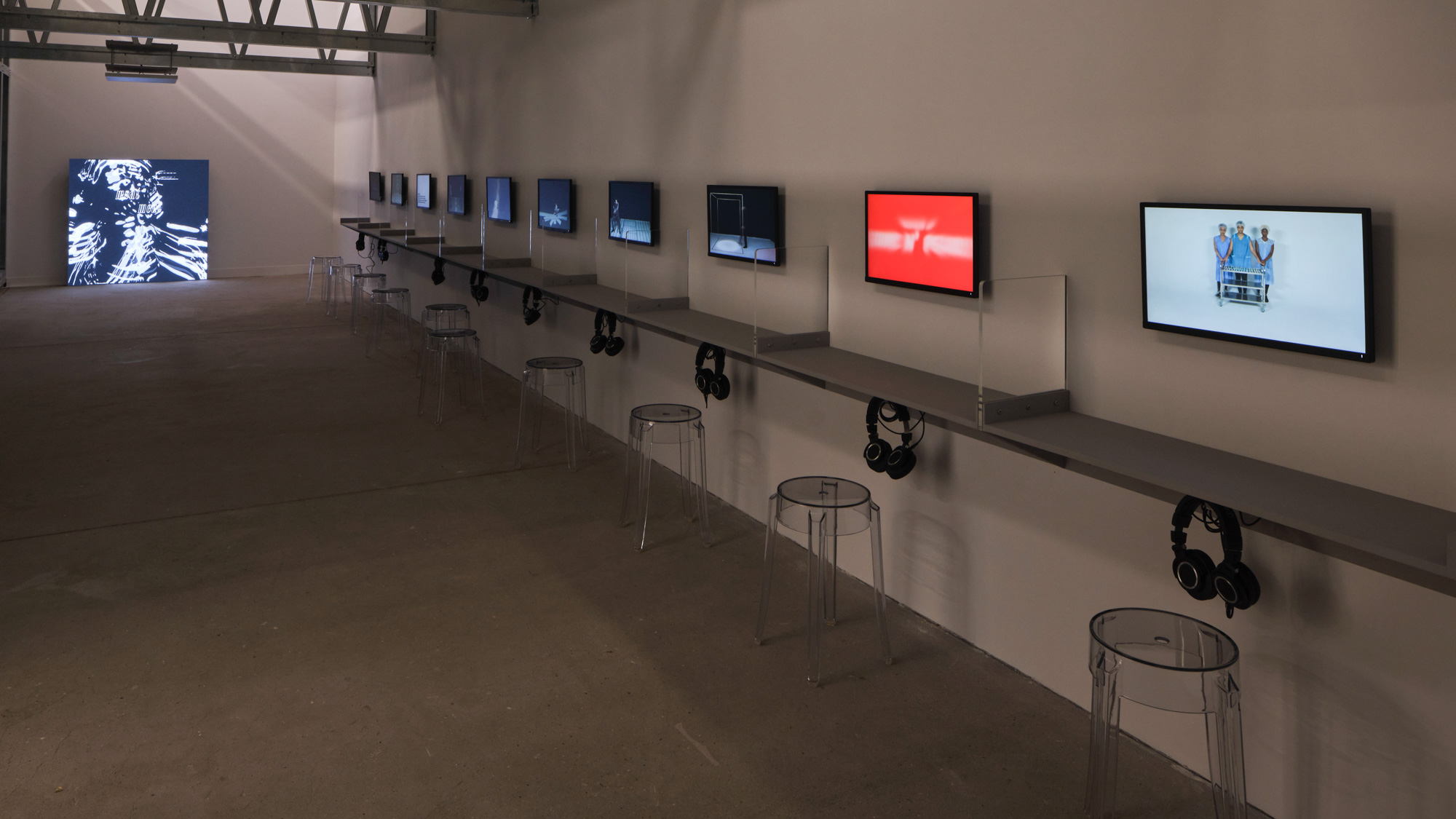
While the homonormative hierarchy of identities and bodies unbalanced the visibilities of broader LGBTQ+ communities, heteronormative governance interfered with the relationship between queer art and the public. This heteronormative power manifested itself in the censorship licenses and screening advisory for young persons and children for several works including Zheng’s; Roy Dib’s video of two lovers conversing while on a road trip, Mondial 2010 (2014); and Shu Lea Cheang’s video series about the lives of people persecuted for their sexuality, 10 cases 10 films 3x3x6 (2019). One of Cheang’s videos, Foucault X, was ironically banned by the power of the censor, exposing the penetration of disciplinary power even within a queer space. These authoritative regulations created tension between the art and audience, and highlighted a subconscious discourse on whether queer art is appropriate for all. This concern for appropriateness reinforces the heteronormative repression of sexualities that is pervasive in the exhibition.
Even though the curators themselves were evidently conscious of and able to respond to the juridical restrictions, the show did not directly tackle the issue of “decent citizenship” that heteronormativity promotes. If we think beyond the topic of decriminalization of homosexuality in society, we can ask: is the representation of queer art in an authoritative cultural institution actually a form of liberation for the LGBTQ+ populace? Or is it another form of disciplinary knowledge production about the sexualities hidden behind the legitimacy of art? While the admission to the exhibition is free of charge, thus lowering the financial barrier to entry, the well-educated middle class remained its intended audience due to the theoretical accessibility and homonormative visuality of the exhibition. Within the LGBTQ+ circles, there is a strong homonormative norm and order, which codes Asian queer art as a safe zone for certain privileged queer groups.
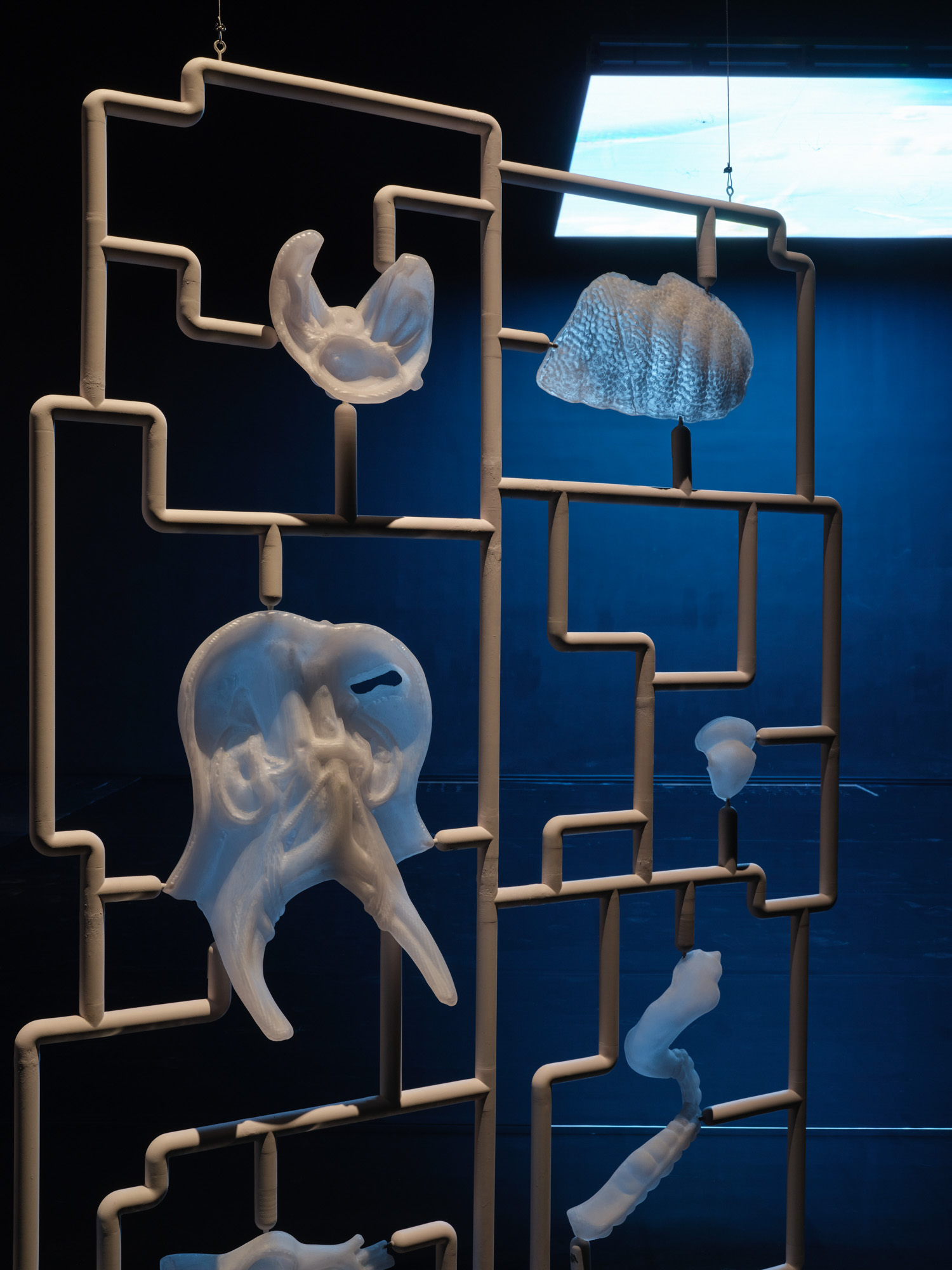
Entering the third chapter, “Queer Futurities: Dematerialisation, Transformation, and New Vocabularies,” the darkened gallery space indicated the opacity of the potentialities and futurities of queer art. The futurities explored still landed within “safe” discourse, such as the dualism of biological sex found in medical science, as explored in Jes Fan’s Visible Woman (2018), which used 3D-printed organs to consider “transgender politics and posthumanism” in a biologically essentialist way; and the relation between sound and consumer citizenship of gay men in Samson Young’s sound-based installation pp (2022). By audio-visualizing the memory of the eponymous gay club, the work mythologized consumer queer culture in Hong Kong, limiting our imagination of queer futurity. Virtue Village’s RUSH and Sex Stains series (both 2022) of digital composite images not only depict utopias where alternative and discriminatory practices of sex are no longer needed to escape from the repressive reality of the suicidal being, but also are an interesting way to reimagine the body, gender, and what forms the queer self. The printed landscape, with an intentionally crude collage depicts a fairy tale inspired by “poppers,” alkyl nitrates typically used to facilitate anal penetration. Tracing sexual desire and pleasure through the alternative “chem fun”—the usage of drugs during sexual intercourse that is common in gay culture—re-maps our orifices, glands, sinews, and muscles differently and unfolds our body. Desire becomes the main force that constitutes identity politics anchored in sexual bodies and alternative sexual experiences, radically different from the heteronormative norms and its health imperialism.

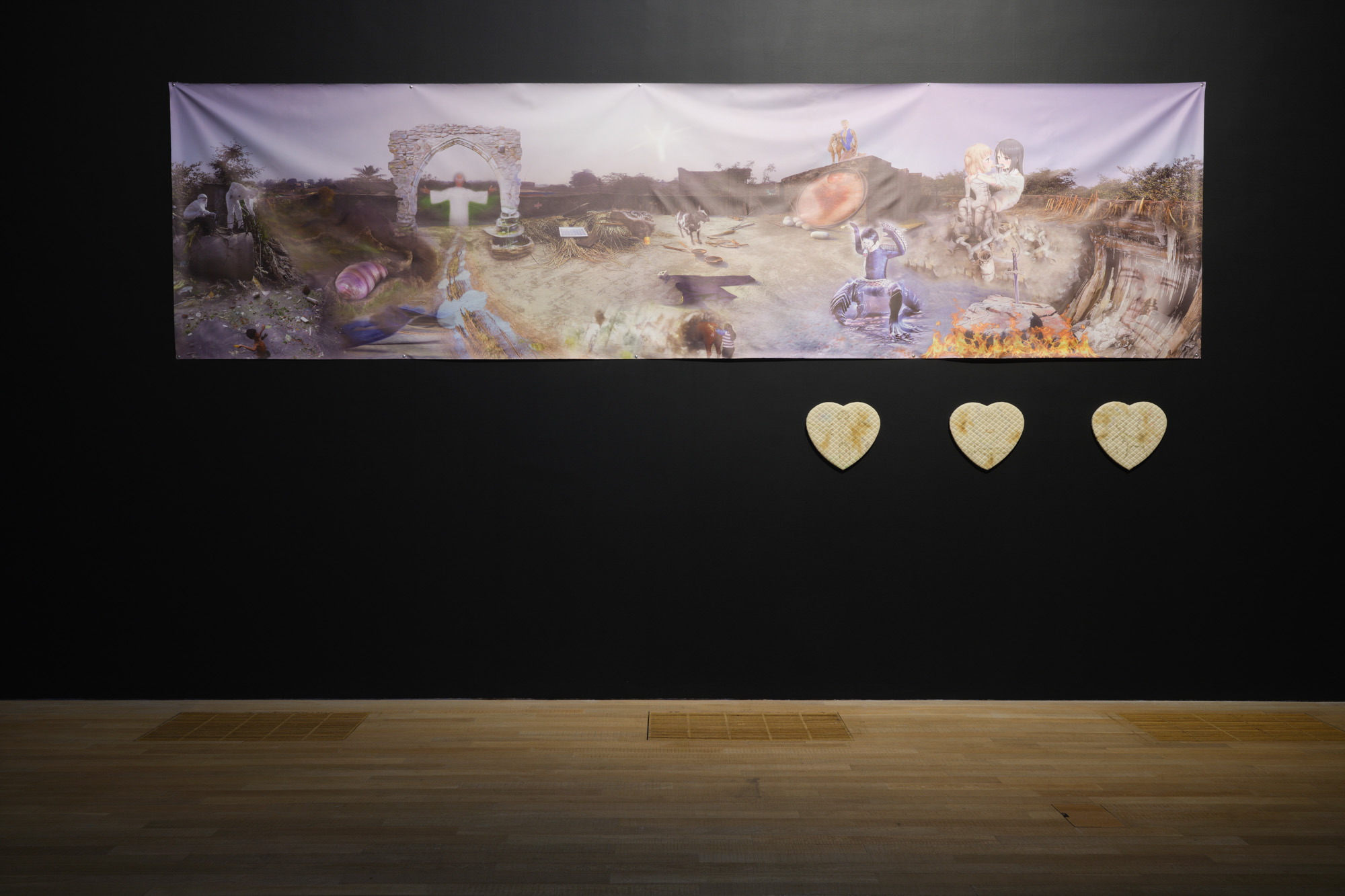
From Asian LGBTQ+ art and issues to queer mythologies, artists and curators alike examined gender and social problems, as well as opened up space for further discussion and diagnosis. The fluidity of the exhibition allowed us to reconsider normative predicaments of Asian LGBTQ+ art and galvanize creativity and reflection on these issues. Maybe rebellion is not merely about dualistically resisting heterosexual norms and challenging sexual disciplines referring to heteronormativity and discursive mechanisms, but also about establishing voices and mythologies of the LGBTQ+ communities outside of the intersectional system of the normative hierarchy in Hong Kong society.
“Myth Makers—Spectrosynthesis III” is currently on view at Tai Kwun Contemporary from December 24, 2022 to April 10, 2023.







